
How to Overclock Your Raspberry Pi – Squeeze Out More Processing Power
3rd June 2021
Modelling the Game World in Space Commander – Learn to Code Your Own Games
18th July 2021The Games That Created the Gaming Industry – The Golden Age of Video Games
Computer video games have been around since the 1960’s when graphic displays first started appearing for computers. You must remember though that at this time a computer filled a room, cost around $100,000, $1,000,000 in today’s money, and required a team of highly qualified professionals to get it to work. Even so, programmers managed to code games such as Spacewar!, the first shoot-em-up game. But with only around fifty PDP-1 computers, on which it ran, in existence not many people ever got to play it!
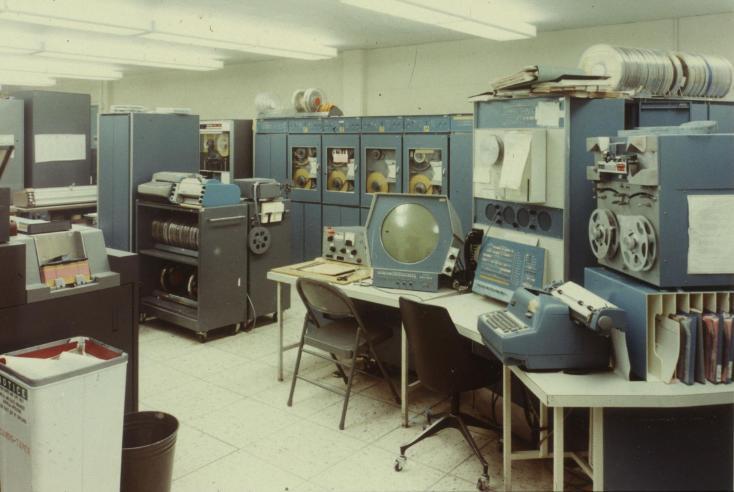
DEC PDP-1
As technology advanced and electronics became less expensive the first public games started to appear in the early 1970’s. These games tended to use purpose-built circuits using discrete logic chips rather than actual microprocessors. They were very much novelty products and didn’t have the mass appeal we see today. Notable games of this period were Computer Space, the first electronic arcade game, and Pong, probably the most successful game of this period.
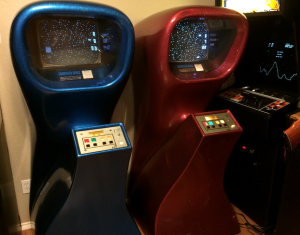
Computer Space
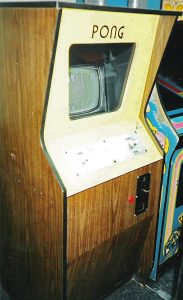
Atari’s Pong
But the gaming industry was still exceedingly small. This was partly due to the limited gameplay of these TTL logic-based games and the cost of the machines.
But in 1978 this all changed with the release of Space Invaders by Taito in Japan.
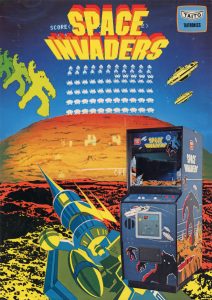
Space Invaders
The Game Changer
Space Invaders literally was a game changer both in what a computer game was, and who was playing it.
Microprocessors, the actual ‘brain’ of a computer, were now available at a reasonable cost. These allowed game developers incredible scope to code games compared to discrete logic circuits, and Tomohiro Nishikado, the inventor and programmer of Space Invaders, took full advantage of this.
Space Invaders truly was revolutionary in its design.
- Multiple enemy ships attacking the player.
- The player ship moving along the bottom of the screen and firing missiles to shoot the aliens.
- The aliens being able to fire multiple missiles to shoot the player.
- The aliens moving across the screen and gradually descending.
- Protective bunkers that were gradually destroyed by alien and player missiles.
- A continuous background music track that got more intense as the level progressed.
- A high score counter.
None of this had been possible with previous arcade machines. Indeed, the game developer rated the hardware design as the most difficult part of the project. Combining this with the outstanding gameplay ensured Space Invaders became an instant success.
As a guide for just how big a success Space Invaders was, Pong, the bestselling game up to that point, sold around 20,000 units. Within the first two years of launch Space Invaders was estimated to have sold around 750,000 units.
The success of Space Invaders sparked an explosion of videogame production. Every company wanted to emulate the success and profits of Space Invaders.
And the rest of they say is history.
So, what were the biggest and most influential arcade computer games of the early 1980s?
Space Invaders (1978)
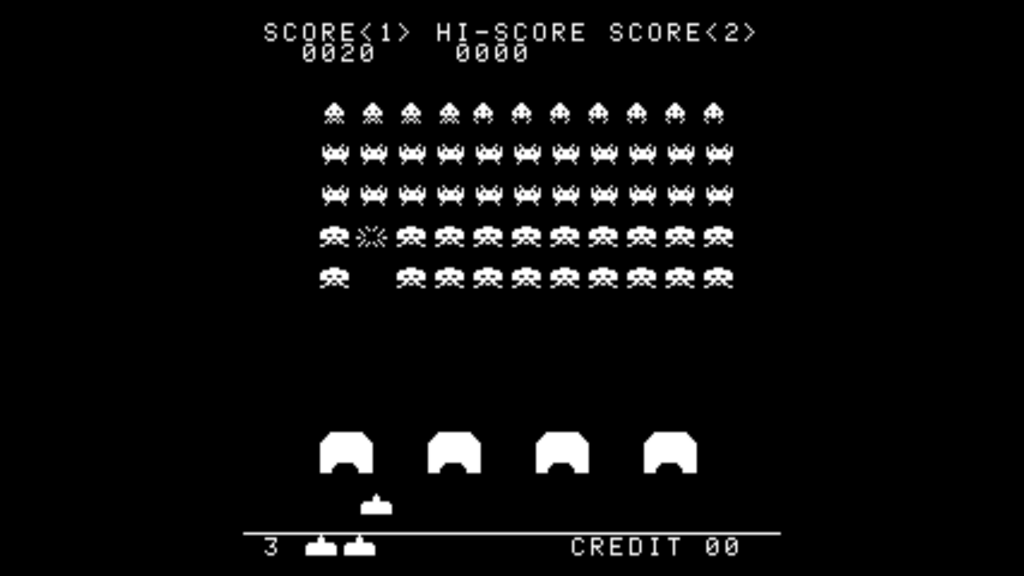
Where better to start than with Space Invaders itself. As we’ve already discussed this was the first blockbuster arcade computer game that almost single-handedly launched the videogame revolution.
The basic premise of the game is quite simple. Rows of aliens start at the top of the screen marching side to side and descending as they reach the edges. The player ship moves along the bottom of the screen shooting aliens with missiles. The aliens return fire with their own missiles trying to hit and kill the player ship. Four protective bunkers provide cover for the player, but these gradually get blown away by missile hits.
As you shoot more and more aliens their marching speed increases with the iconic, heartbeat, background music getting faster and faster.
Each time you clear a grid of aliens the game restarts with the new set of invaders getting lower and lower.
Whilst the graphics may seem very dated by today’s standards the gameplay is still top notch.
At the time, Space Invaders was revolutionary. I vividly remember my big brother taking me to his police station where they just had a game installed. Having never seen a computer game before with the graphics, sound, and excitement it’s a memory that will always stay with me.
Almost every computer game since Space Invaders owes at least part of its Genesis to this game.
Don’t forget to check out my coding Space Invaders course.
Total Sales : around 750,000 units
Total Revenue : $3.8 billion (worth $15.1 billion today)
Asteroids (1979)
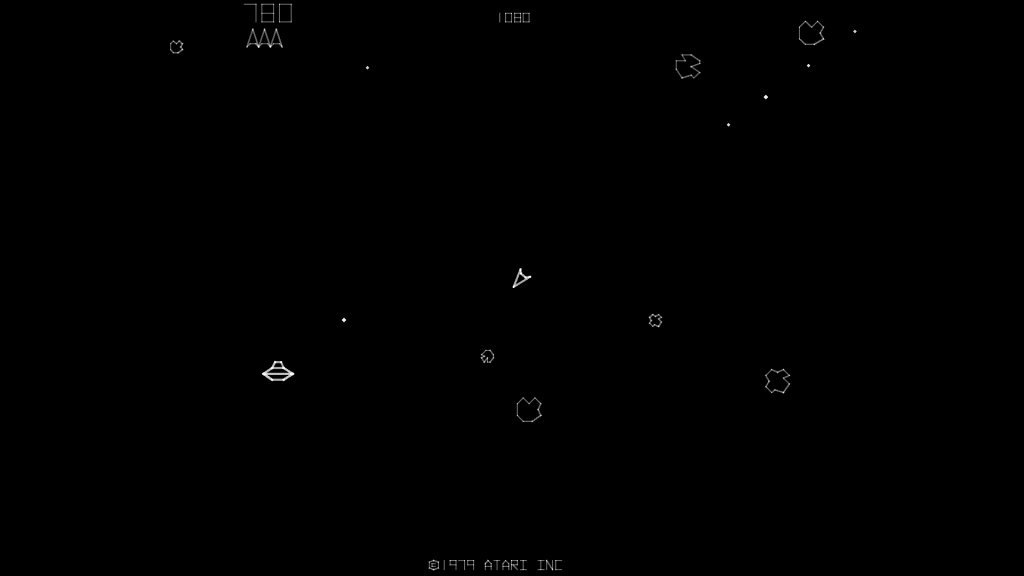
Atari had been developing a few games using vector graphics arcade machines, such as Lunar Lander. But Asteroids, launched in 1979, was an instant hit becoming the bestselling vector graphics game of all time, and Atari’s best-selling arcade machine. Vector graphics use the electron beam inside a cathode-ray tube to draw lines on the screen forming the game elements. This allowed the game characters to smoothly rotate and fire in any direction, something hard to achieve with more traditional pixel-based graphics.
The game involves a player ship stuck in an asteroid field. It must use its laser cannon to break up the asteroids into smaller and smaller pieces until they finally disintegrate. As the asteroids break up, they become harder to shoot and to avoid.
The players controls consist of a rotate left and right button, a thrust button, a fire button, and hyperspace button. Use the left and right buttons to control the direction the ship was pointing in and the thrust button to increase its velocity in that direction. The game includes a very realistic modelling of the spaceship motion where once it’s moving in a certain direction it will continue in that direction whilst gradually slowing down. Thrusting in a different direction simply adds velocity in this new direction causing the ship to fly in curves rather than simply changing direction to the weights pointing.
As an added hazard enemy spaceships appear as each level progresses. These try to shoot you as they move across the screen.
If you want to have a go at coding Asteroids for yourself have a look at my Learning to Code Asteroids course.
Total Sales : 100,000 units
Total Revenue : $800 million ($2.28 billion)
Pac-Man (1980)
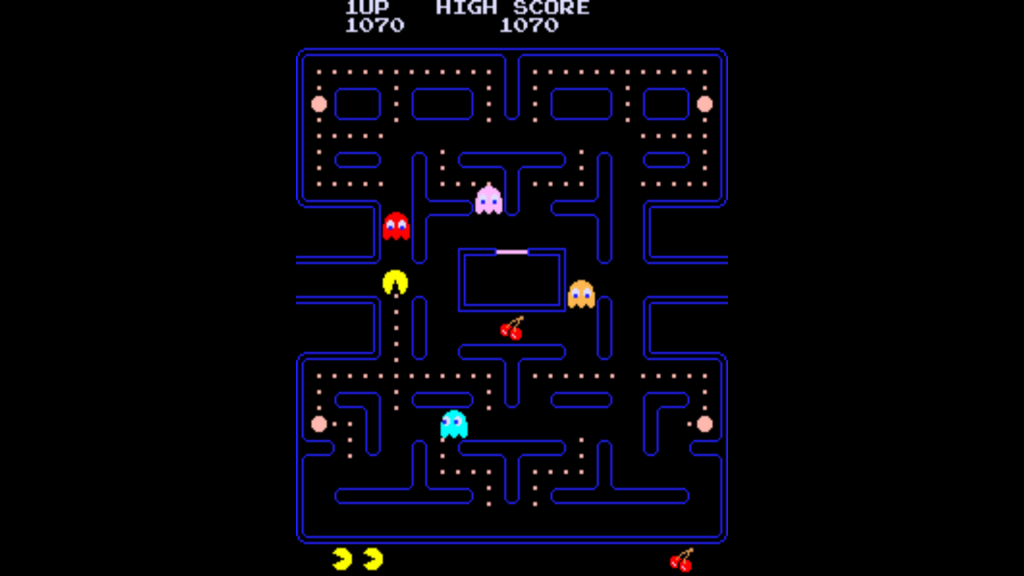
Released in 1980 by Namco and designed and coded by Toru Iwatani, Pac-Man is the highest earning game of all time. It was the first character-based game to be released allowing it to appeal to both men and women, rather than the predominantly male focused shoot-em-up games that had taken over since Space Invaders launched.
The game is based around Pac-Man, a yellow circle character, who was trapped in a maze along with four ghosts. Pac-Man must eat 240 yellow dots which line the corridors of the maze to progress to the next level. He is continually chased by the four ghosts who will kill him if they catch him. Four power pills, one in each corner of the maze, allow Pac-Man to turn the tables on the ghosts and eat them. After eating a power pill Pac-Man has a short time when the ghosts turn dark blue for him to catch and eat the ghosts.
Pac-Man was the first game to introduce cut scenes. After every two or three levels a short animation is played to give the player rest and introduce a bit of humour into the game.
Pac-Man was also one of the first games to introduce a form of artificial intelligence for each of the ghosts. Each ghost follows a different algorithm to decide how it chases Pac-Man.
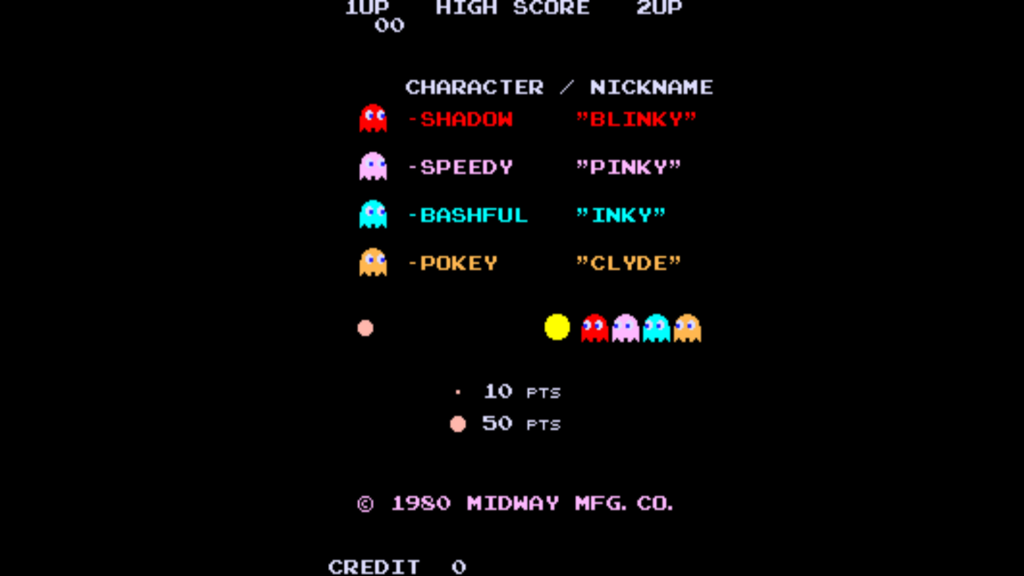
The red ghost, called Blinky, always tries to get to the same position as Pac-Man. This results in him almost always chasing Pac-Man.
The pink ghost, called Pinky, always tries to get to where Pac-Man is going by targeting a place in the maze four steps ahead Pac-Man. This results in him blocking Pac-Man’s escape when being chased by other ghosts.
The blue ghost, called Inky, has a slightly different way of targeting Pac-Man. He uses the position to paces in front of Pac-Man along with the position of Blinky, the red ghost, to create a new target position that he tries to get to. This results in Inky trying to get the position which Blinky is chasing Pac-Man towards, again meaning that he will quite often trap Pac-Man.
The orange ghost, called Clyde, uses two separate algorithms. When he’s far away from Pac-Man he uses Blinky’s algorithm to get as close to Pac-Man as it can. However, once he gets within eight spaces of Pac-Man he starts returning to his home corner. Again, once he gets farther than eight spaces from Pac-Man he returns to chasing him. This results in a slightly more random movement pattern where he is generally hovering around the vicinity of Pac-Man but not directly targeting him.
Total Sales : 400,000 units
Total Revenue : $6 billion ($16.1 Billion)
Scramble (1981)
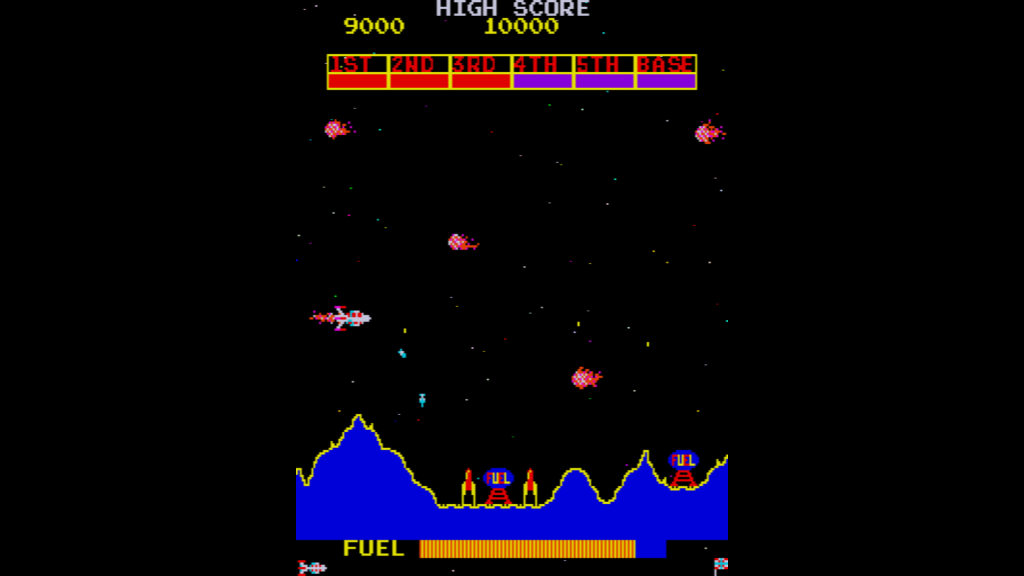 Scramble, from Konami, introduced the world to the side scrolling shooter genre. It was the first to use forced scrolling where the game screen continuously moved with the player being forced to keep going through the map. The game was also one of the first to have distinct levels within the game map where the player had to overcome different challenges.
Scramble, from Konami, introduced the world to the side scrolling shooter genre. It was the first to use forced scrolling where the game screen continuously moved with the player being forced to keep going through the map. The game was also one of the first to have distinct levels within the game map where the player had to overcome different challenges.
In the game the player flies a ‘Jet’ which can move vertically and horizontally on the screen with the ground continuously scrolling from right to left. The Jet can fire horizontal bullets as well as dropping bombs which descend in an arc in front of the player.
Enemy targets on the ground include bases, fuel tanks which replenish the Jet’s fuel reserve and missiles which can launch vertically to shoot the player. Each level consists of six sections. In the first the Jet flies over mountains with scattered bases, fuel tanks and missiles which launch to kill the player. In section 2 the player flies through a cave with UFO ships oscillating up and down. These have to be shot or avoided whilst still bombing ground targets to replenish the fuel supply. Section 3 sees the player flying through an asteroid storm where you can’t shoot the asteroids. Section 4 is the city level where the player flies over a city scape with the usual ground targets and missiles. This is followed by the treacherous machine tunnel stage where there is only just enough room to manoeuvre the Jet through the passages and finally to the base section where the Jet must attack the enemy base. Then it’s back to the start but faster and harder.
Total Sales : 15,000 units
Total Revenue : n/a
Donkey Kong (1981)
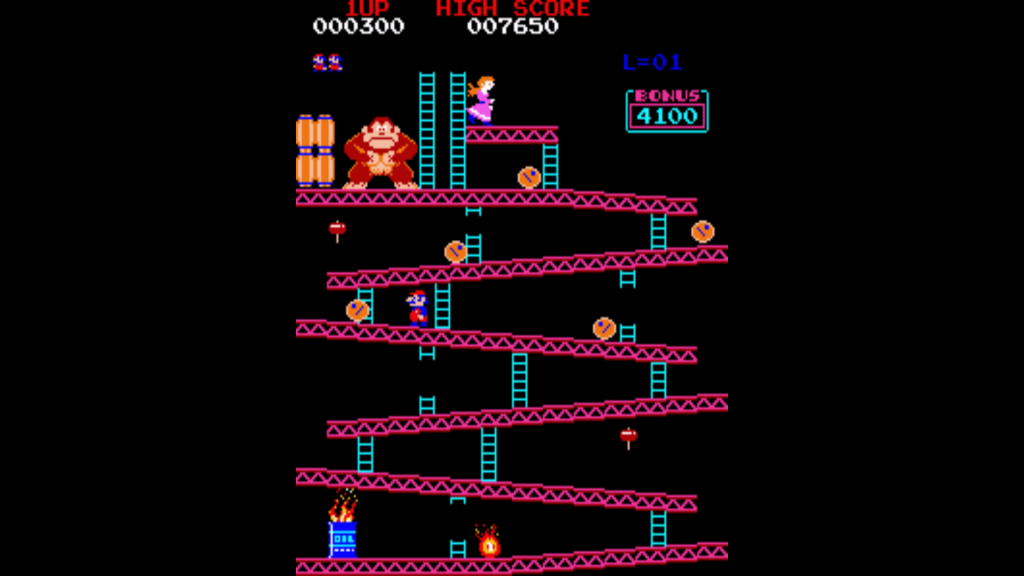
Donkey Kong was one of the very first platform games, where action takes place on several play levels on the screen. It followed Pac-Man’s lead by featuring a friendly, comic character as the player, initially called Jumpman, but in later versions became the infamous Mario. Again, the novel gameplay, four different game screens, each with very different playing styles, and constantly hectic gameplay made this one of Nintendo’s first big hits.
On the first three levels Mario starts at the bottom of each screen and must battle his way to the top to save the girl. On the way he has to dodge barrels, fireballs and other objects whilst making pixel perfect jumps to overcome various obstacles.
On the fourth level Mario must pull out 8 connection bolts holding Donkey Kong’s platform. When he manages this Donkey Kong falls to the ground, defeated and Mario finally gets the girl.
Then the whole four levels restart but faster and more difficult.

Donkey Kong Levels 1 – 4
Incidentally, Mario started life as a carpenter in Donkey Kong, as indicated on the arcade machine flyers, only changing profession to plumbing when he got to Super Mario Bros. in 1983.
Total Sales : 132,000 units
Total Revenue : $280 million ($800 million)
Pole Position (1982)
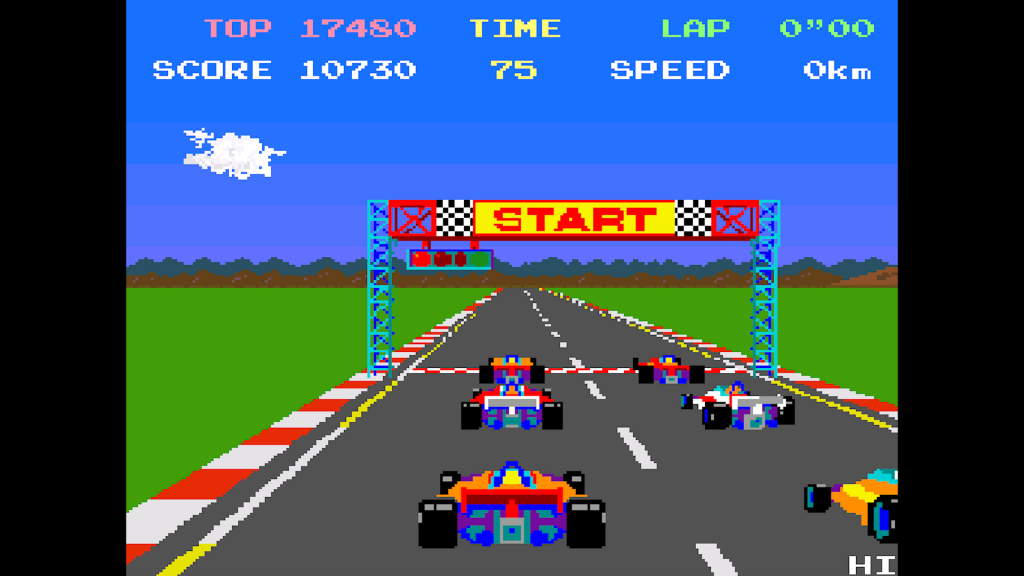
Atari’s Pole Position’s claim to fame is that it was the first 16-bit video game, using Namco’s new 16-bit arcade cabinet. It’s one of the first games to use a third person, 3D view and one of the most popular and influential racing games of all time. This third person view became the norm after Pole Position, rather than the top down 2D racing games that came before it.
Personally, I’d have to say that game play is good if not outstanding, but the 3D effects were amazing for the time. Not true 3D but a clever use of layering and sprite scaling to give a great impression of a real racing track. The system works by dividing the ground between the player and the horizon into horizontal strips. For each strip the computer works out how far from the player the strip is and then calculates which parts of its length should be grass, verge and road. When you then draw the strips you get the 3D vanishing point effect. Car and sign sprites are then scaled and placed on top of the strip that matches their distance.
The arcade machines came in standard upright cabinets and enclosed, seated cockpit versions. Each had a full-sized steering wheel, high/low gear shift lever and an accelerator pedal, with the car cockpit like version also having a brake pedal.
The game simulates a formula one style (1980’s version!) race with a qualifying lap followed by the race itself. In qualifying you must get round the track in the allotted time to earn your place in the race. If you don’t qualify you continue driving until your time runs out. If you do qualify you progress to the race where 7 CPU controlled cars compete against you. You must complete each lap within the specified time and after 4 laps the race ends.
Pole Position’s 3D, third person view set the standard for almost all racing games to follow, Out Run, Daytona, Sega Rally, Crazy Taxi and more, right up to today’s console games.
Total Sales : 21,000 in the US
Total Revenue : $61 million ($179 million)
Summing Up and Where to Play
These games are just a few of the most important games released during this ‘Golden Age’. They created and introduced a wide range of game genres and play styles and helped drag computer gaming out of the tech world and into everyday life. Without their contribution the games we play today would not exist.
If you lived through this period, I hope this brings back fond memories. If you didn’t then you must try these games out for real.
If you can get to a computer game museum, please go. You can’t beat the look and feel of a real arcade cabinet.
If not give emulation a go and turn your computer into your very own arcade machine. With this you can run the real code from the real arcade games. Have a look at my Arcade Gaming tutorials for full details.




